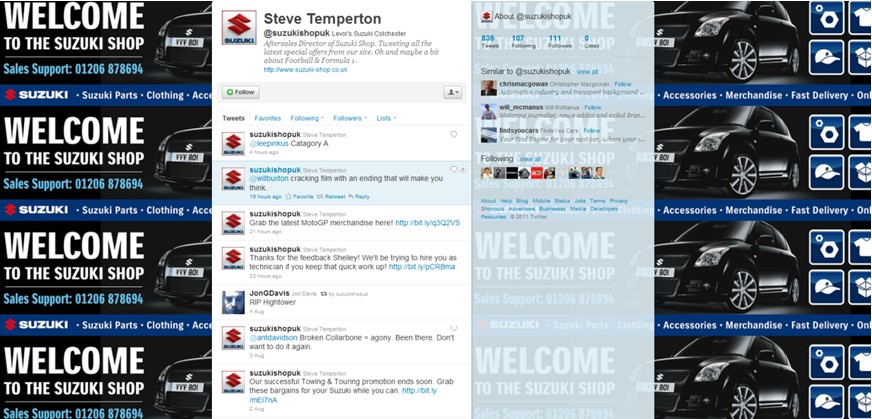When twitter was first launched, it was quickly branded as a must-have sales tool. People were aggressive about collecting as many followers as they could, resorting to automated apps to help them gather the masses. Tweeting about breakfast, lunch, and dinner, became common in a bid to stay visible, but as the numbers began to grow, sales people were asking the one important question – how could I convert these followers into solid leads?
Over the last few years, as more twitter apps have been made available, and as it gets easier to tweet from various mobile devices, social networking, and twitter in particular, has become an integrated part of online marketing. It is a time consuming practice to indulge in, so every moment spent on it has to generate some positive results. It is also important to set up metrics to determine how valuable your tweets are, and to see if your followers are targeted leads that will convert.
The honest truth you must accept is most of your followers probably don’t have a clue about who you are and what you do. They are simply indulging in a common principle – collect as many followers as you possibly can and then figure out what to do with them.
When compared to the time and tested methods of list gatherers – email subscriptions and blogging RSS feeds – how does twitter fare? It may be below in terms of a per person value (after all it’s much easier to get 1000 followers than a 1000 RSS subscribers), but it can still prove invaluable in your sales efforts.
I’m a big fan of LinkedIn – I’ve used it to network, build contacts within my industry, share information, and make friends. But I do understand the value of twitter, and have seen firsthand how successful it can be when in the hands of a savvy marketer or salesperson. Here’s what I’ve learnt from them:
1. Use twitter as a listening device: Twitter is a great place at which to listen to what your colleagues, clients, and target audience have to say, and develop an understanding of what’s important to them. Use the search function by entering in appropriate keywords, and follow those who are active participants and provide value to a discussion. You can also use the group function to follow groups, or build a list of those clients/companies that are useful to you. Tools like TweetDeck allow you to filter the stream of information, so you can select and prioritize those tweets which are important, based on various categories (e.g. marketing, business, sales, training etc). Use it to ‘listen’ to what your customers are searching for.
2. Be an active participant: Twitter is a conversation, not a monologue. Take part in discussions actively. This might call for some time being set aside each day, or you can streamline your entire social network onto a site like HootSuite, which lets you multitask. Participation is a great way to demonstrate your expertise in a particular field and it sets you up as a point of contact for those who wish to buy your products and services, or educate themselves in your industry. It’s also a great way to show off your personality. This is one time you can forget sales pitches and engage the audience with fun, exciting, and valuable content.
3. Step in and fill the void: Check out industry leaders to see what they are offering. Then do a keyword search and check to see what viewers are complaining about. Very often, you’ll find a gap between the advice offered and the advice needed. For example, if you sell car spare parts, you may do a keyword search to see who’s talking about issues with their cars. Can you help them?
4. Offer variety: Consider how you can keep your customer engaged. Social networking tools don’t necessarily work well for hard selling (no one likes being bombarded by sales offers and nothing else), but are excellent when it comes to engaging the audience subtly. Use links to offer copy, webcasts, slides and webinars. Going back to the simple car example, Suzukishopuk is Steve Temperton, after sales director of Suzuki Shop. He responds to questions, doles out advice, discusses the latest happenings in the motorsport industry, chats with his clients, and yes, occasionally chucks in a promotional offer or two.
PS: Note the awesome branding, subtle promotional line, and the sales support number he’s included.
5. Share information: If you come across something you know would interest a friend or colleague, don’t hesitate to pass it on to them. Twitter is all about sharing and referrals are a key part to getting in touch with potential prospects. Recommending other tweets is also a great way to be an active participant, and apps like FollowFriday allow you to recommend multiple tweets and thank those who have recommended/retweeted your tweets.
6. Spend time getting to know your followers: Yes, this is a tricky one. And it’s time consuming too. After all, how long is it going to take to go through thousands of followers? A long time. But by eliminating those who fall outside your target audience (that’s done pretty quickly if you have a well defined target group); you can focus on those who might become potential customers. Spend some time researching how you can help them – offer suggestions, send them free reports to download, and eventually, make suggestions as to how your product or service can assist them.
7. Keep in touch long after the sale’s been processed: People change jobs, move countries and adopt different lifestyles, and through it all, twitter allows you to keep in touch and keep up with their news. New jobs and countries represent newer markets to explore, so use twitter to stay on top of your networking.
If you are going to use twitter to net you customers, then your ‘followers’ do matter.
Remember to house clean your twitter list occasionally. You will always have ‘twitter spammers’ who follow you offering anything and everything, from deep unbelievable discounts, to offers to make big bucks each month. You don’t need them on your list, and having them associated with your name may actually be a drawback. So go through your list and as you look for prospects, cull those who don’t belong on it using the ‘block’ filter. You can try applications like Tweepi to help you block those who don’t belong or to let you unfollow those who do not follow you.










